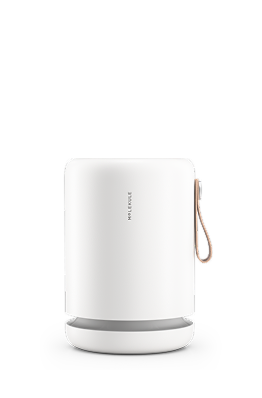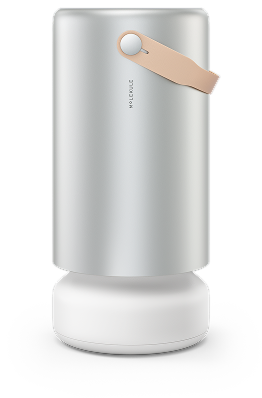It takes a lot of love and care to keep our furry friends happy and healthy—just think of how much time you’ve spent researching different pet foods, learning new training techniques, and browsing pet store aisles for their next favorite toy. Diet and exercise are important, but caring for your pet also means protecting them from unhealthy air quality.
Like humans, our animal companions can be affected by airborne chemicals, allergens, and other types of pollution. Here, we break down how air quality can affect your pet’s health and what you can do to minimize their exposure to harmful air pollution.
How does poor air quality affect dogs, cats, and other pets?
Our pets aren’t immune to the harmful effects of airborne pollutants, including particulate matter and volatile organic compounds (VOCs). Animals can be allergic to pollen, mold spores, and other airborne particles, just like us. They can also develop long-term health conditions, such as respiratory disease, from repeated exposure to poor indoor or outdoor air quality.
Common sources of unhealthy air include wildfire smoke, ozone, vehicle exhaust and smog, cleaning chemicals and other VOCs, pollen, and dust. Your pet probably won’t be able to tell you when bad air quality is bothering them, so it’s up to you to monitor indoor and outdoor air quality and take steps to protect them from air pollution.

What AQI is bad for dogs and other pets?
As a general rule, you don’t want your pet to spend time outside when the air quality index (AQI) is at levels that would harm humans. According to AirNow, the official home of the U.S. AQI, any AQI value above 100 is unhealthy for sensitive groups, and any value above 150 is unhealthy for the general public.
Protecting your pets from unhealthy outdoor air quality
Checking the outdoor air quality in your area is easy—just go to AirNow.gov and enter your zip code. Try to limit outdoor time as much as possible on days when the AQI is unhealthy. You may have to get creative with helping your pet exercise indoors on bad AQI days, but their lungs will thank you.
If you live near a high-traffic area, try to take walks as far away from busy roads as possible and keep pets indoors during and right after rush hour. If it’s hard for you to breathe outdoors, chances are your pet will have trouble too.

Protecting your pets from poor indoor air quality
You can minimize your pet’s exposure to air pollution while indoors by:
- Keeping windows and doors closed on days with unhealthy air quality;
- Changing your HVAC filters regularly as recommended by the manufacturer;
- Dusting and vacuuming often to reduce the buildup of pollen, pet dander, and other particle pollution in your home;
- Wiping your pet’s feet when they come indoors to keep them from tracking in pollutants from outside;
- Using an air purifier to help reduce indoor air pollution (some, like Molekule’s Air Pro and Mini+, can also give you real-time air quality data to help you monitor your indoor air).
Since the day you brought your pet home for the first time, they’ve been a part of your family. You want the best for them, and that includes doing what you can to ensure they’re breathing clean air. By improving your indoor air quality and checking your local AQI before letting them outdoors, you can help reduce your pet’s exposure to unhealthy air. Check out this review of the Air Pro from a real dog owner courtesy our friends at PetKeen.







